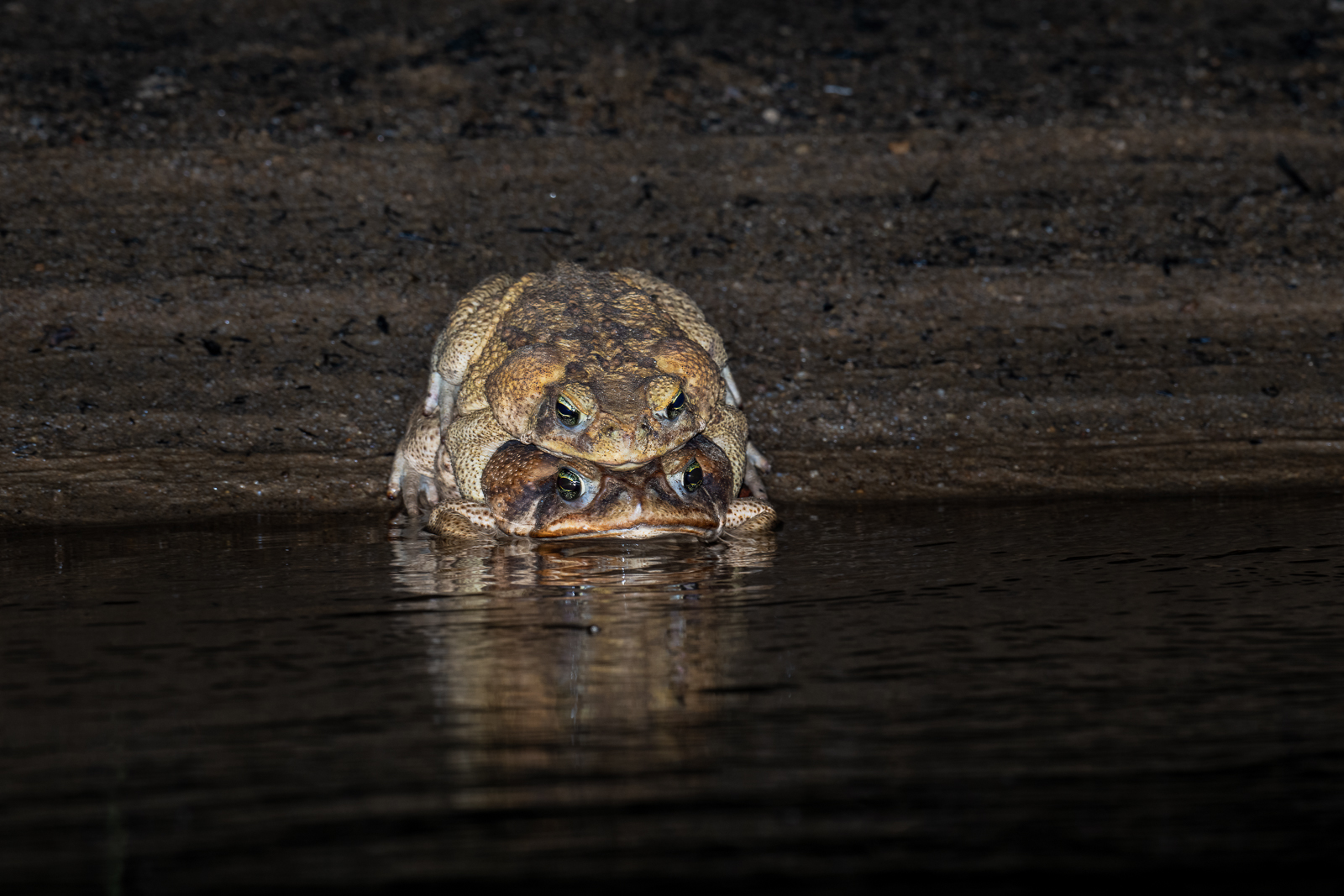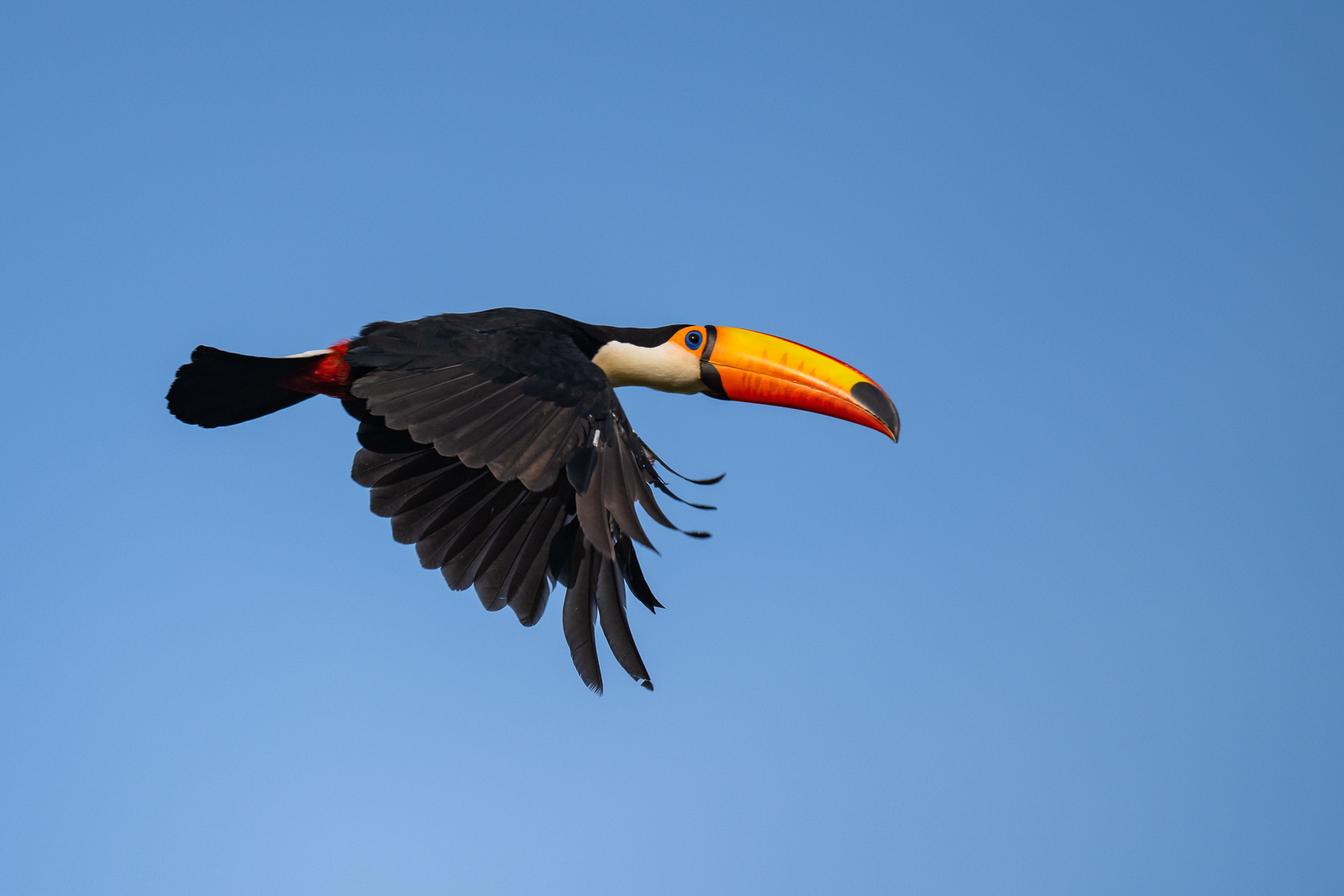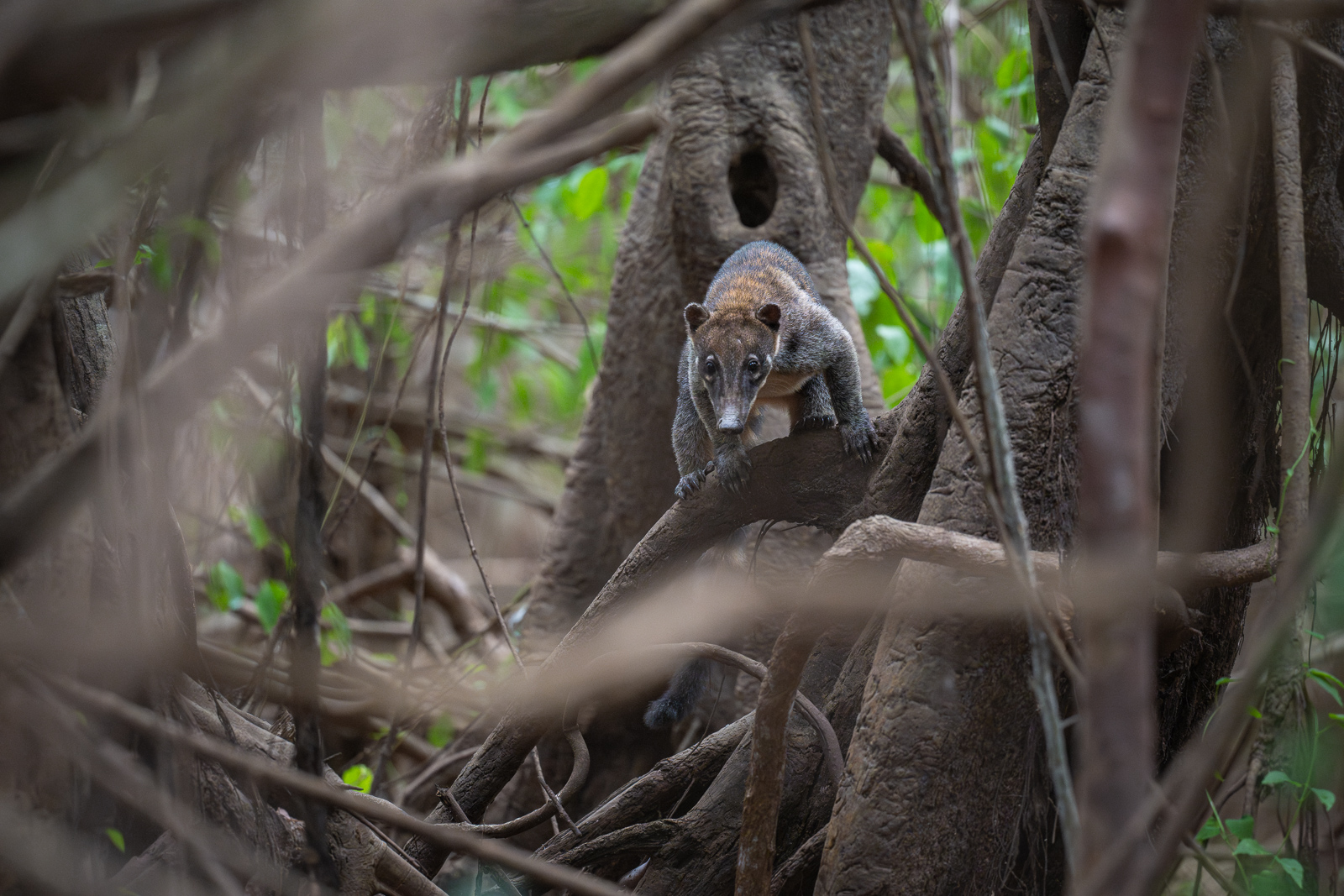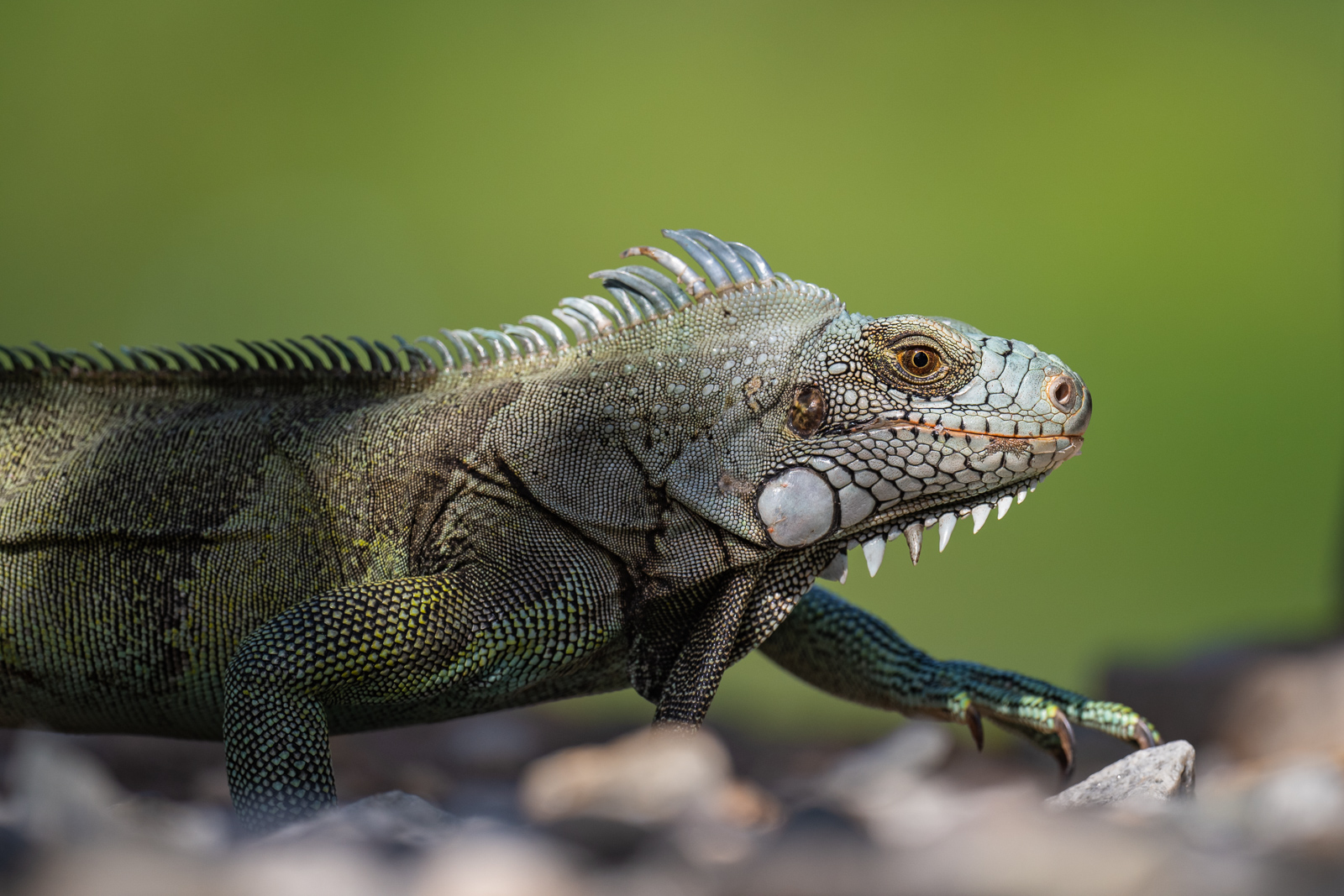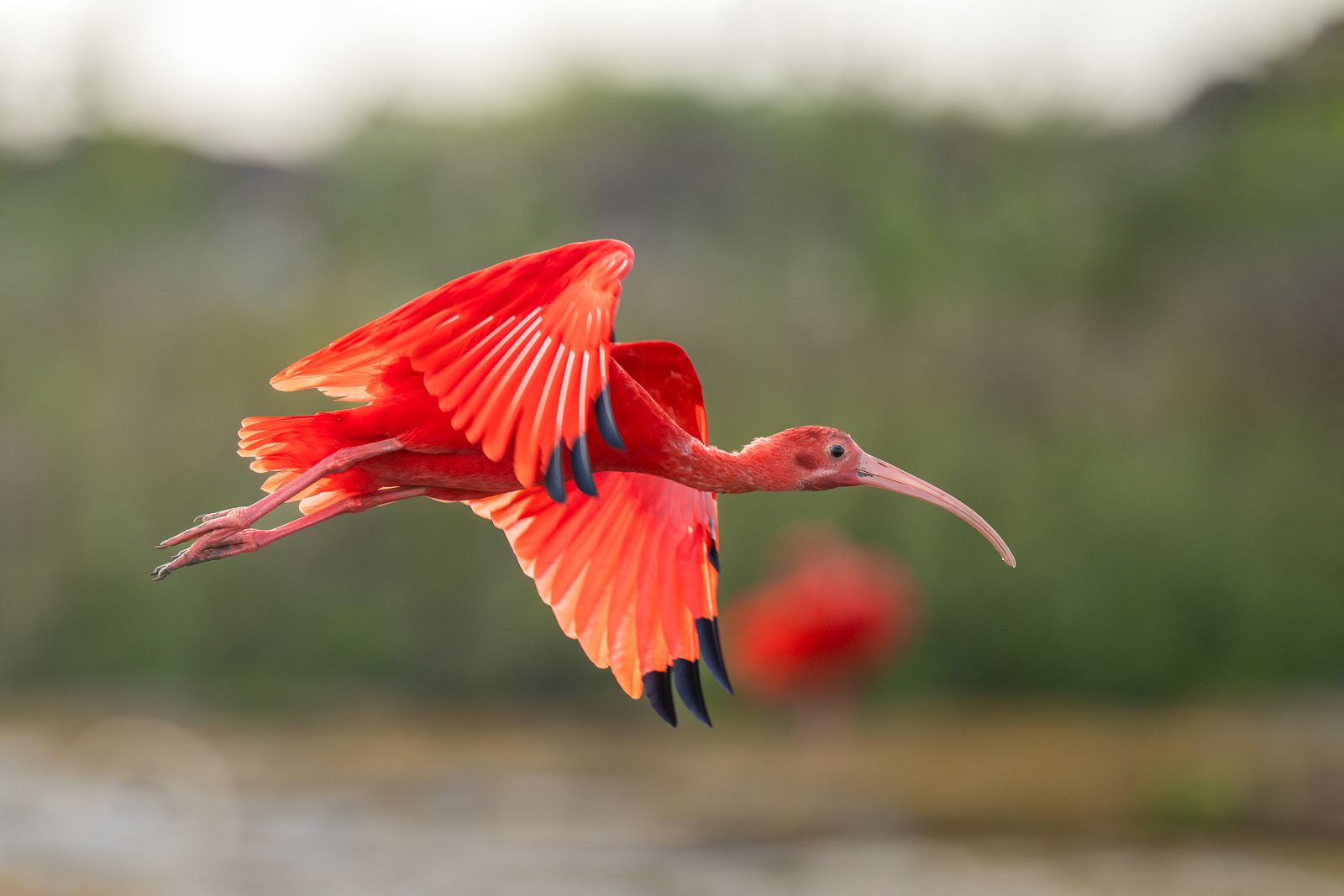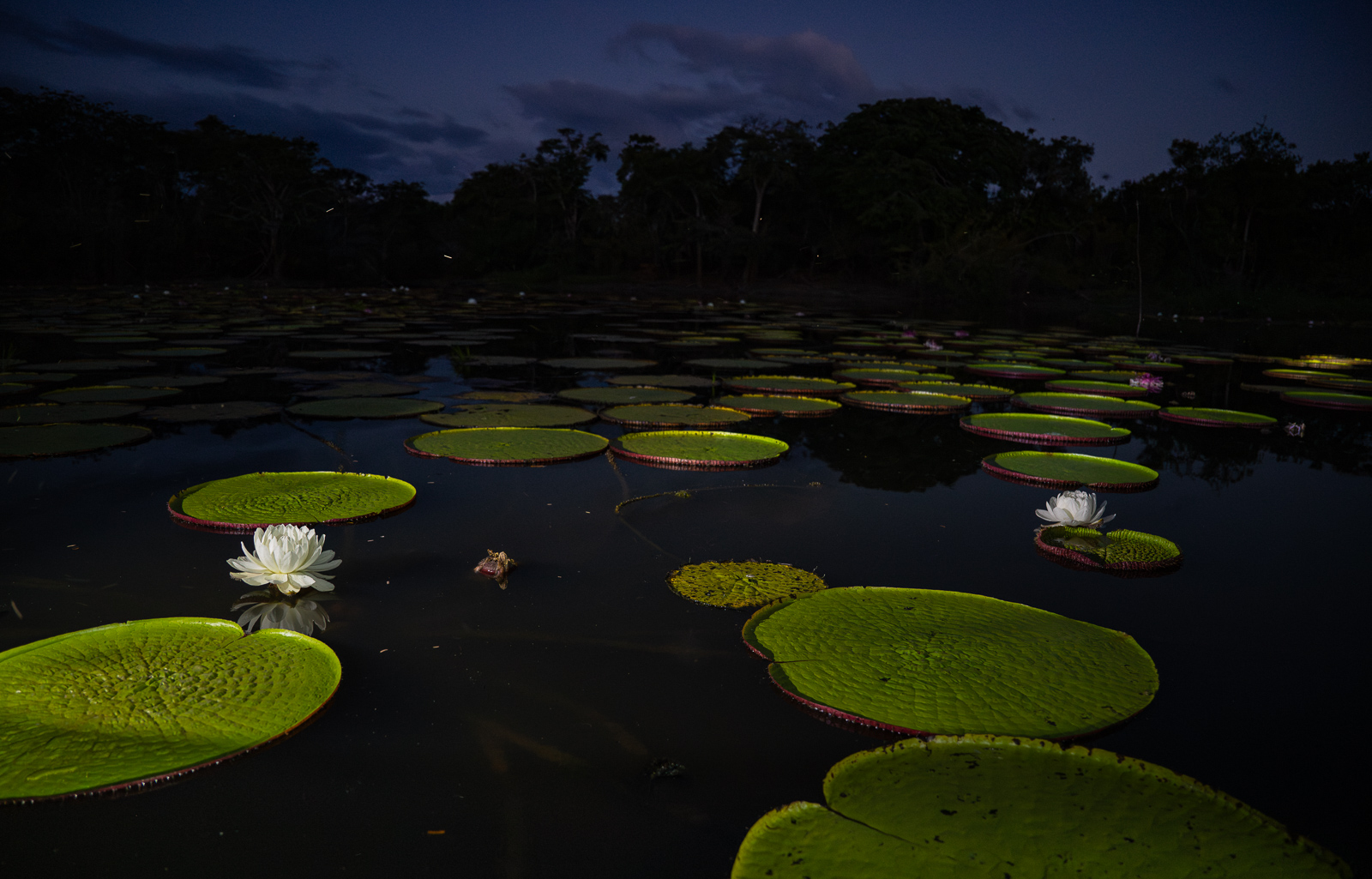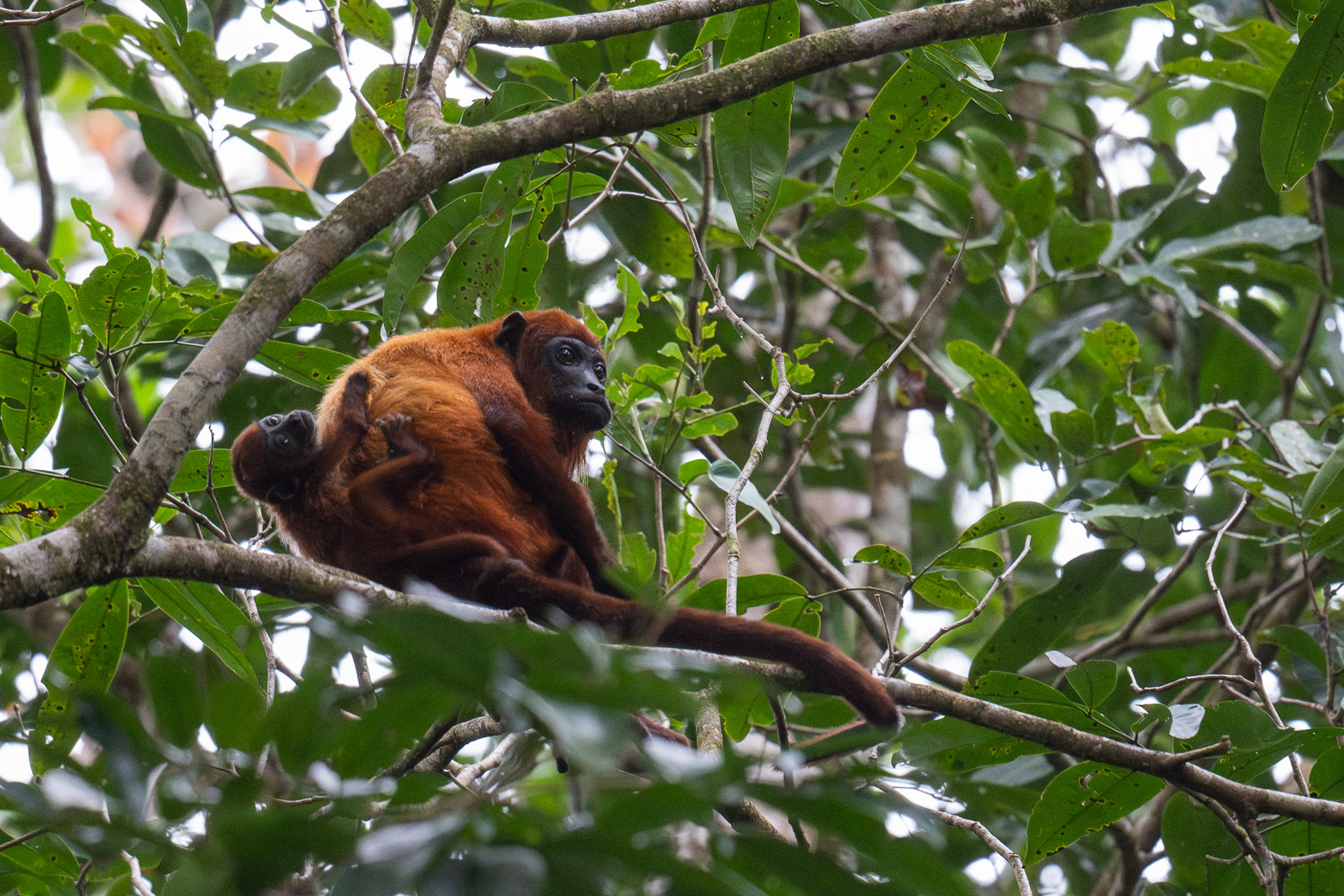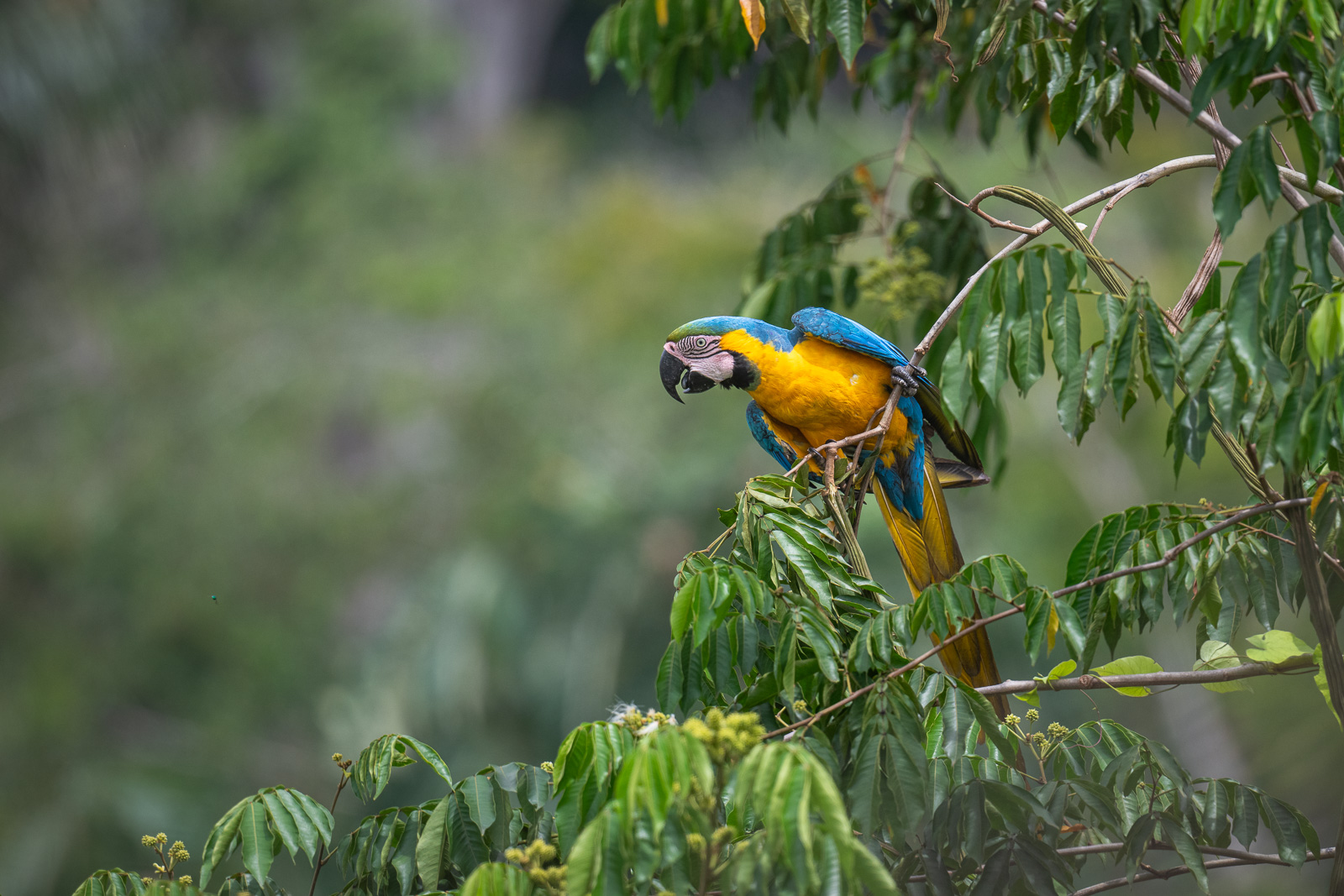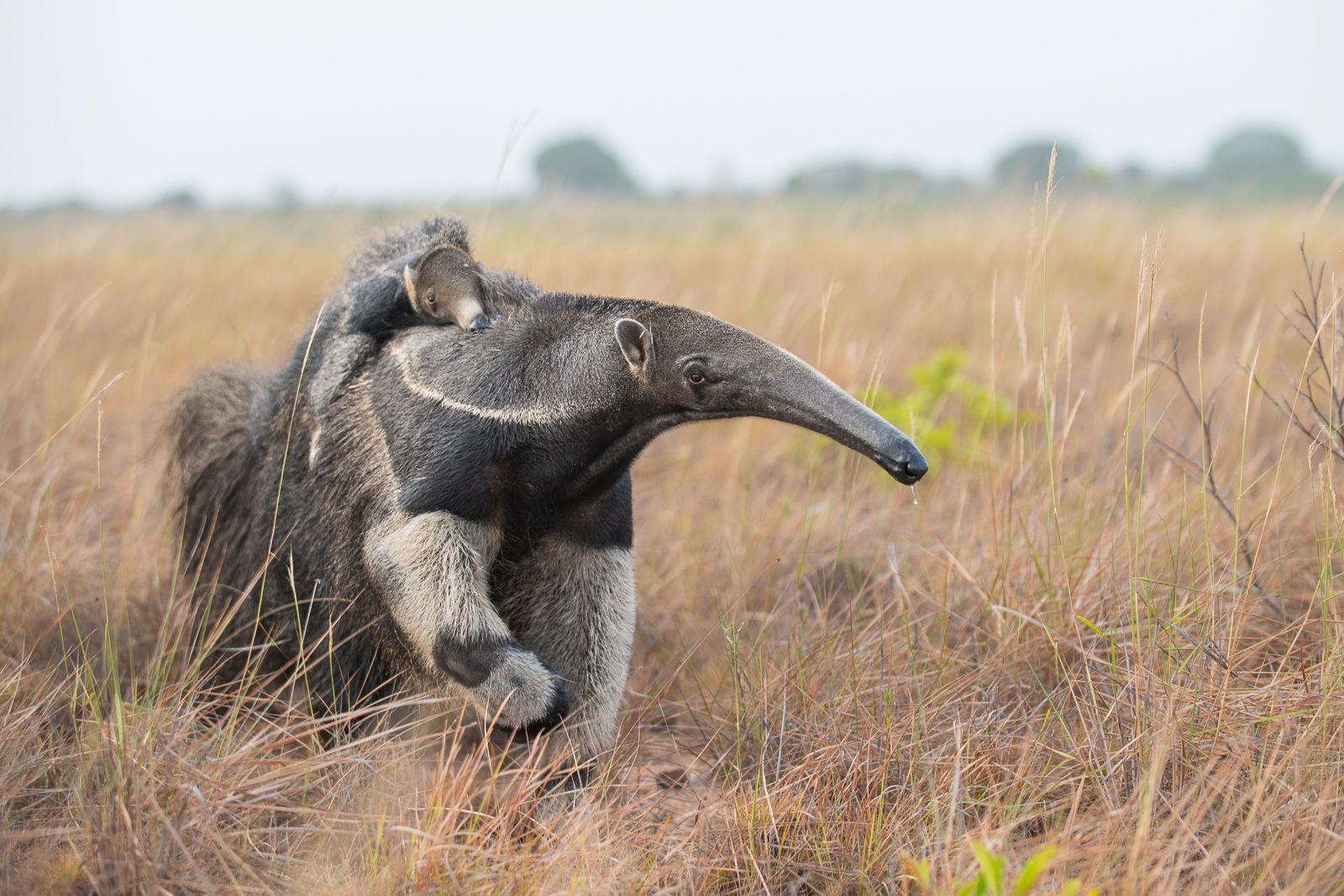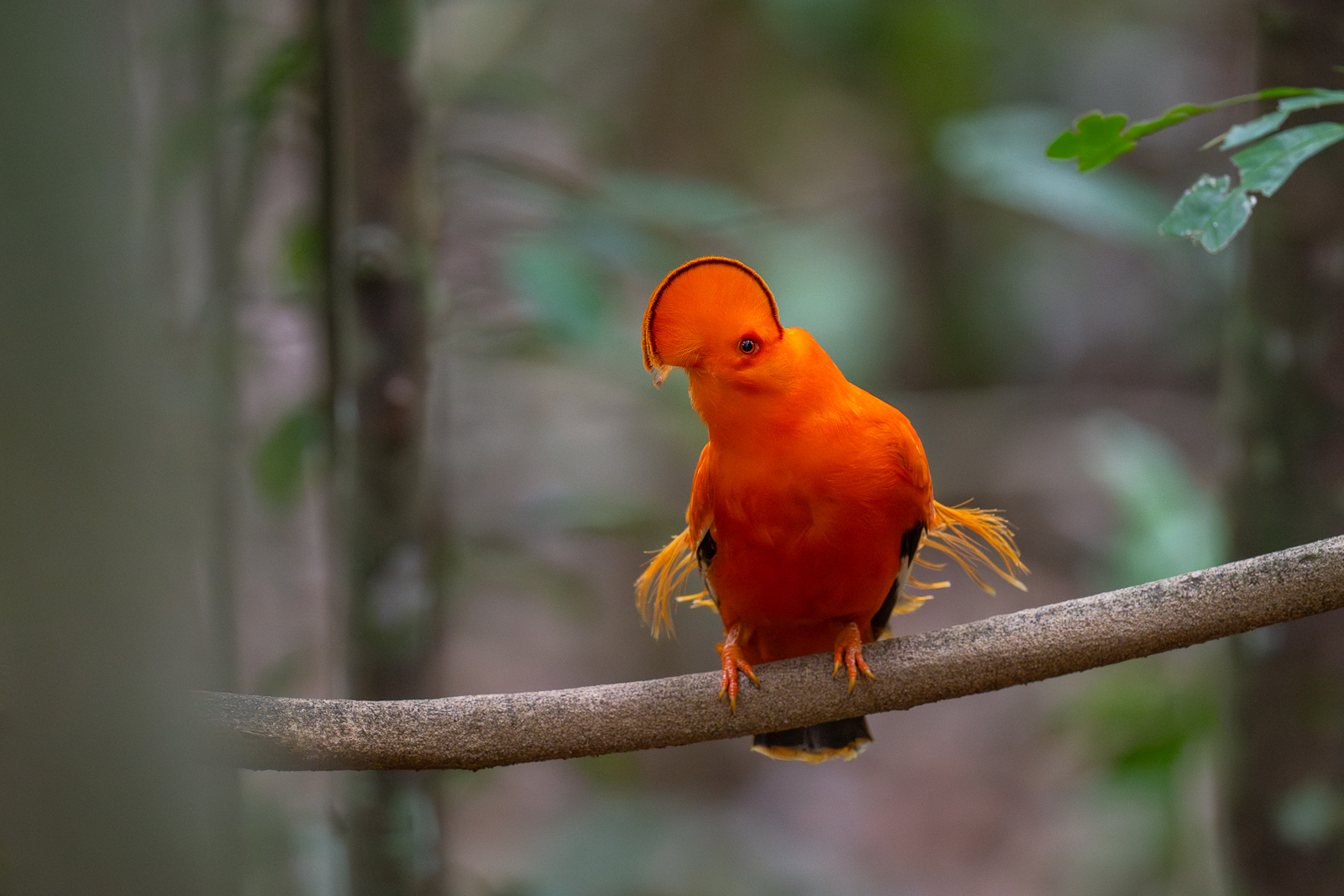Toco Toucan in Flight
 Toucans can be challenging to photograph in the rainforest because they are inevitably high in the canopy. That said, I was thrilled when I came across several toco toucans in the city of Georgetown on my last day in Guyana. I had heard the city’s botanical gardens were a great place for birds, but didn’t know that included toucans. I had previously photographed this species in the Pantanal of Brazil and didn’t know they ranged so far north. Toco toucans are the largest toucan species in the world — and were the toucan featured in a well-known ad campaign for Guinness. Nikon Z8 with Nikkor 500mm PF lens, ISO 220, f/5.6 at 1/1600th of a second.
Toucans can be challenging to photograph in the rainforest because they are inevitably high in the canopy. That said, I was thrilled when I came across several toco toucans in the city of Georgetown on my last day in Guyana. I had heard the city’s botanical gardens were a great place for birds, but didn’t know that included toucans. I had previously photographed this species in the Pantanal of Brazil and didn’t know they ranged so far north. Toco toucans are the largest toucan species in the world — and were the toucan featured in a well-known ad campaign for Guinness. Nikon Z8 with Nikkor 500mm PF lens, ISO 220, f/5.6 at 1/1600th of a second.
Coati
 I only saw one group of coatis in Guyana and they were very skittish — much more so than those I’ve seen in other Central and South American countries. That said, I was able to sit quietly in just the right spot and eventually a few of them showed a bit of curiosity before running off. Nikon Z8 with 500mm PF lens, ISO 9000, f/5.6 at 1/500th of a second.
I only saw one group of coatis in Guyana and they were very skittish — much more so than those I’ve seen in other Central and South American countries. That said, I was able to sit quietly in just the right spot and eventually a few of them showed a bit of curiosity before running off. Nikon Z8 with 500mm PF lens, ISO 9000, f/5.6 at 1/500th of a second.
Green Iguana
 Green iguanas naturally range from central Mexico south to Paraguay and Brazil. Although you may have come across one in Florida, where they were purposely introduced by an exotic pet dealer in the mid 1960s. Allegedly, he released 300 of them and they were able to successfully establish a sustainable population. I photographed this one in Guyana as it strolled along a river bank, beneath a tree where several others were resting. Nikon Z8 with Nikkor 500mm PF lens, ISO 560, f/5.6 at 1/1600th of a second.
Green iguanas naturally range from central Mexico south to Paraguay and Brazil. Although you may have come across one in Florida, where they were purposely introduced by an exotic pet dealer in the mid 1960s. Allegedly, he released 300 of them and they were able to successfully establish a sustainable population. I photographed this one in Guyana as it strolled along a river bank, beneath a tree where several others were resting. Nikon Z8 with Nikkor 500mm PF lens, ISO 560, f/5.6 at 1/1600th of a second.
Scarlet Ibis
 Another of my target species in Guyana was the scarlet ibis. I had photographed these birds before in Trinidad, but at quite a distance as flocks returned from Venezuela to roost for the evening. In Guyana I was able to photograph them at close range and captured all sorts of behavior and many flight shots. Of the 27 species of ibis in the world, the scarlet ibis is certainly the most brilliantly plumed. Nikon Z8 with Nikkor 500mm PF lens, ISO 1100, f/5.6 at 1/2000th of a second.
Another of my target species in Guyana was the scarlet ibis. I had photographed these birds before in Trinidad, but at quite a distance as flocks returned from Venezuela to roost for the evening. In Guyana I was able to photograph them at close range and captured all sorts of behavior and many flight shots. Of the 27 species of ibis in the world, the scarlet ibis is certainly the most brilliantly plumed. Nikon Z8 with Nikkor 500mm PF lens, ISO 1100, f/5.6 at 1/2000th of a second.
Victoria Amazonica Water Lilies
 Where there are ponds and lakes in the Rupununi region of Guyana there are likely Victoria amazonica water lilies — the second largest in the world, with pads that can be ten feet in diameter and flowers that are sixteen inches across and weigh up to three and a half pounds. Victoria amazonica blooms at night. The flowers start out white and turn pink after releasing pollen. We watched as these flowers took about ten minutes to fully open and I used multiple flashlights to illuminate the scene. Nikon Z8 with Nikkor Z 24-70 f/2.8 lens, ISO 5000, f/2.8 at 1/30th of a second, flash lights.
Where there are ponds and lakes in the Rupununi region of Guyana there are likely Victoria amazonica water lilies — the second largest in the world, with pads that can be ten feet in diameter and flowers that are sixteen inches across and weigh up to three and a half pounds. Victoria amazonica blooms at night. The flowers start out white and turn pink after releasing pollen. We watched as these flowers took about ten minutes to fully open and I used multiple flashlights to illuminate the scene. Nikon Z8 with Nikkor Z 24-70 f/2.8 lens, ISO 5000, f/2.8 at 1/30th of a second, flash lights.
Guyanan Red Howler Monkeys
 I was able to photograph four species of monkey on my trip to Guyana. This mom and baby are Guyanan red howler monkeys, captured in the Iwokrama rainforest. The Iwokrama is considered one of the four last pristine tropical rainforests in the world (along with the Congo, New Guinea and the Amazon). Nikon Z8 with Nikkor 500mm PF lens, ISO 4000, f/5.6 at 1/160th of a second.
I was able to photograph four species of monkey on my trip to Guyana. This mom and baby are Guyanan red howler monkeys, captured in the Iwokrama rainforest. The Iwokrama is considered one of the four last pristine tropical rainforests in the world (along with the Congo, New Guinea and the Amazon). Nikon Z8 with Nikkor 500mm PF lens, ISO 4000, f/5.6 at 1/160th of a second.
Blue-And-Yellow Macaw
 I love photographing parrots, macaws and toucans. But more often than not, they are high in the canopy of very tall trees, set against a bright white sky. Occasionally, however, they grace us with their presence a bit closer to the ground. I was at the airstrip in the Iwokrama Forest of Guyana last week waiting for my departing flight when I saw a bunch of blue-and-yellow macaws behind and above an adjacent village. The plane was running late, so I unpacked the camera to see what I could capture. Most of the macaws were high in the treetops, but three or four of them suddenly dove down to feed on the fruits of a low-lying bush, perfect for an eye-level perspective. Nikon Z8 with Nikkor 500mm PF lens, ISO 450, f/5.6 at 1/1000th of a second.
I love photographing parrots, macaws and toucans. But more often than not, they are high in the canopy of very tall trees, set against a bright white sky. Occasionally, however, they grace us with their presence a bit closer to the ground. I was at the airstrip in the Iwokrama Forest of Guyana last week waiting for my departing flight when I saw a bunch of blue-and-yellow macaws behind and above an adjacent village. The plane was running late, so I unpacked the camera to see what I could capture. Most of the macaws were high in the treetops, but three or four of them suddenly dove down to feed on the fruits of a low-lying bush, perfect for an eye-level perspective. Nikon Z8 with Nikkor 500mm PF lens, ISO 450, f/5.6 at 1/1000th of a second.
Giant Anteater with Pup
 As I mentioned on Monday, I saw two anteater moms with their pups. This pair came very close. Giant anteaters are practically blind, but they have an excellent sense of smell and are very attuned to sound. The trick was to be downwind from the anteater, and to sit quietly with a silent, mirrorless camera. I eventually had to move away so she wouldn’t stumble right into me with those long claws. Babies will continue to hitch a ride on mom’s back for up to ten months, after which they venture out on their own. You can’t really tell in this photo, but the pup will position itself so that the dark stripe of fur aligns with that of the mom and provides camouflage against predators. Nikon Z8 with Nikkor 70-200mm lens (at 90mm) ISO 280, f/4 at 1/500th of a second.
As I mentioned on Monday, I saw two anteater moms with their pups. This pair came very close. Giant anteaters are practically blind, but they have an excellent sense of smell and are very attuned to sound. The trick was to be downwind from the anteater, and to sit quietly with a silent, mirrorless camera. I eventually had to move away so she wouldn’t stumble right into me with those long claws. Babies will continue to hitch a ride on mom’s back for up to ten months, after which they venture out on their own. You can’t really tell in this photo, but the pup will position itself so that the dark stripe of fur aligns with that of the mom and provides camouflage against predators. Nikon Z8 with Nikkor 70-200mm lens (at 90mm) ISO 280, f/4 at 1/500th of a second.
Guianan Cock-of-the-Rock
 The other species I really wanted to see in Guyana was the Guianan cock-of-the-rock. There are two cock-of-the-rock species in South America, the Andes and Guianan. I’ve seen the Andes twice but wasn’t able to get any photos. That luck changed last week when I saw three males all vying for the same female. She watched from the sidelines while the males took turns performing their courtship displays at the lekking site, appropriately situated on a rocky cliff. More posts and info on these guys coming soon. Nikon Z8 with Nikkor 500mm PF lens, ISO 6400, f/5.6 at 1/100th of a second.
The other species I really wanted to see in Guyana was the Guianan cock-of-the-rock. There are two cock-of-the-rock species in South America, the Andes and Guianan. I’ve seen the Andes twice but wasn’t able to get any photos. That luck changed last week when I saw three males all vying for the same female. She watched from the sidelines while the males took turns performing their courtship displays at the lekking site, appropriately situated on a rocky cliff. More posts and info on these guys coming soon. Nikon Z8 with Nikkor 500mm PF lens, ISO 6400, f/5.6 at 1/100th of a second.


